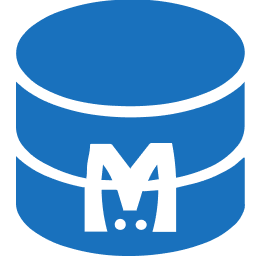You are looking at the documentation of a prior release. To read the documentation of the latest release, please
visit here.
New to KubeDB? Please start here.
Memcached
What is Memcached
Memcached is a Kubernetes Custom Resource Definitions (CRD). It provides declarative configuration for Memcached in a Kubernetes native way. You only need to describe the desired database configuration in a Memcached object, and the KubeDB operator will create Kubernetes objects in the desired state for you.
Memcached Spec
As with all other Kubernetes objects, a Memcached needs apiVersion, kind, and metadata fields. It also needs a .spec section. Below is an example of a Memcached object.
apiVersion: kubedb.com/v1
kind: Memcached
metadata:
name: mc1
namespace: demo
spec:
replicas: 1
version: 1.6.22
monitor:
agent: prometheus.io/operator
prometheus:
serviceMonitor:
labels:
app: kubedb
interval: 10s
configSecret:
name: mc-custom-config
podTemplate:
metadata:
annotations:
passMe: ToDatabasePod
controller:
annotations:
passMe: ToDeployment
spec:
serviceAccountName: my-service-account
schedulerName: my-scheduler
nodeSelector:
disktype: ssd
imagePullSecrets:
- name: myregistrykey
containers:
- name: memcached
args:
- "-u memcache"
env:
- name: TEST_ENV
value: "value"
resources:
requests:
memory: "64Mi"
cpu: "250m"
limits:
memory: "128Mi"
cpu: "500m"
serviceTemplates:
- alias: primary
metadata:
annotations:
passMe: ToService
spec:
type: NodePort
ports:
- name: http
port: 9200
deletionPolicy: Delete
spec.replicas
spec.replicas is an optional field that specifies the number of desired Instances/Replicas of Memcached server. If you do not specify .spec.replicas, then it defaults to 1.
KubeDB uses PodDisruptionBudget to ensure that majority of these replicas are available during voluntary disruptions so that quorum is maintained.
spec.version
spec.version is a required field specifying the name of the MemcachedVersion crd where the docker images are specified. Currently, when you install KubeDB, it creates the following MemcachedVersion crds,
1.5.221.6.221.6.29
spec.monitor
Memcached managed by KubeDB can be monitored with builtin-Prometheus and Prometheus operator out-of-the-box. To learn more,
spec.configSecret
spec.configSecret is an optional field that allows users to provide custom configuration for Memcached. This field accepts a VolumeSource. So you can use any Kubernetes supported volume source such as configMap, secret, azureDisk etc. To learn more about how to use a custom configuration file see here.
spec.podTemplate
KubeDB allows providing a template for database pod through spec.podTemplate. KubeDB operator will pass the information provided in spec.podTemplate to the Petset created for Memcached server.
KubeDB accept following fields to set in spec.podTemplate:
- metadata
- annotations (pod’s annotation)
- controller
- annotations (petset’s annotation)
- spec:
- containers
- volumes
- podPlacementPolicy
- initContainers
- containers
- podPlacementPolicy
- imagePullSecrets
- nodeSelector
- serviceAccountName
- schedulerName
- tolerations
- priorityClassName
- priority
- securityContext
Uses of some field of spec.podTemplate is described below,
You can check out the full list here.
Uses of some field of spec.podTemplate is described below,
spec.podTemplate.spec.tolerations
The spec.podTemplate.spec.tolerations is an optional field. This can be used to specify the pod’s tolerations.
spec.podTemplate.spec.volumes
The spec.podTemplate.spec.volumes is an optional field. This can be used to provide the list of volumes that can be mounted by containers belonging to the pod.
spec.podTemplate.spec.podPlacementPolicy
spec.podTemplate.spec.podPlacementPolicy is an optional field. This can be used to provide the reference of the podPlacementPolicy. This will be used by our Petset controller to place the db pods throughout the region, zone & nodes according to the policy. It utilizes kubernetes affinity & podTopologySpreadContraints feature to do so.
spec.podTemplate.spec.containers
The spec.podTemplate.spec.containers can be used to provide the list containers and their configurations for to the database pod. some of the fields are described below,
spec.podTemplate.spec.containers[].name
The spec.podTemplate.spec.containers[].name field used to specify the name of the container specified as a DNS_LABEL. Each container in a pod must have a unique name (DNS_LABEL). Cannot be updated.
spec.podTemplate.spec.containers[].args
spec.podTemplate.spec.containers[].args is an optional field. This can be used to provide additional arguments to database installation.
spec.podTemplate.spec.containers[].env
.env is an optional field that specifies the environment variables to pass to the Memcached containers.
Note that, KubeDB does not allow to update the environment variables. If you try to update environment variables, KubeDB operator will reject the request with following error,
Error from server (BadRequest): error when applying patch:
...
for: "./mc.yaml": admission webhook "memcached.validators.kubedb.com" denied the request: precondition failed for:
...
At least one of the following was changed:
apiVersion
kind
name
namespace
spec.podTemplate.spec.nodeSelector
spec.podTemplate.spec.env
spec.podTemplate.spec.containers[].resources
spec.podTemplate.spec.containers[].resources is an optional field. This can be used to request compute resources required by containers of the database pods. To learn more, visit here.
spec.podTemplate.spec.imagePullSecrets
KubeDB provides the flexibility of deploying Memcached server from a private Docker registry. To learn how to deploym Memcached from a private registry, please visit here.
spec.podTemplate.spec.nodeSelector
spec.nodeSelector is an optional field that specifies a map of key-value pairs. For the pod to be eligible to run on a node, the node must have each of the indicated key-value pairs as labels (it can have additional labels as well). To learn more, see here .
spec.podTemplate.spec.serviceAccountName
serviceAccountName is an optional field supported by KubeDB Operator (version 0.13.0 and higher) that can be used to specify a custom service account to fine tune role based access control.
If this field is left empty, the KubeDB operator will create a service account name matching Memcached crd name. Role and RoleBinding that provide necessary access permissions will also be generated automatically for this service account.
If a service account name is given, but there’s no existing service account by that name, the KubeDB operator will create one, and Role and RoleBinding that provide necessary access permissions will also be generated for this service account.
If a service account name is given, and there’s an existing service account by that name, the KubeDB operator will use that existing service account. Since this service account is not managed by KubeDB, users are responsible for providing necessary access permissions manually. Follow the guide here to grant necessary permissions in this scenario.
spec.podTemplate.spec.resources
spec.resources is an optional field. This can be used to request compute resources required by the database pods. To learn more, visit here.
spec.serviceTemplate
You can also provide a template for the services created by KubeDB operator for Memcached server through spec.serviceTemplate. This will allow you to set the type and other properties of the services.
KubeDB allows following fields to set in spec.serviceTemplate:
aliasrepresents the identifier of the service. It has the following possible value:primaryis used for the primary service identification.standbyis used for the secondary service identification.statsis used for the exporter service identification.
metadata:
- annotations
spec:
- type
- ports
- clusterIP
- externalIPs
- loadBalancerIP
- loadBalancerSourceRanges
- externalTrafficPolicy
- healthCheckNodePort
- sessionAffinityConfig
See here to understand these fields in details.
spec.deletionPolicy
deletionPolicy gives flexibility whether to nullify(reject) the delete operation of Memcached crd or which resources KubeDB should keep or delete when you delete Memcached crd. KubeDB provides following four termination policies:
- DoNotTerminate
- Delete (
Default) - WipeOut
When deletionPolicy is DoNotTerminate, KubeDB takes advantage of ValidationWebhook feature in Kubernetes 1.9.0 or later clusters to implement DoNotTerminate feature. If admission webhook is enabled, DoNotTerminate prevents users from deleting the database as long as the spec.deletionPolicy is set to DoNotTerminate.
Following table show what KubeDB does when you delete Memcached crd for different termination policies,
| Behavior | DoNotTerminate | Delete | WipeOut |
|---|---|---|---|
| 1. Block Delete operation | ✓ | ✗ | ✗ |
| 2. Delete PetSet | ✗ | ✓ | ✓ |
| 3. Delete Services | ✗ | ✓ | ✓ |
| 4. Delete Secrets | ✗ | ✗ | ✓ |
If you don’t specify spec.deletionPolicy KubeDB uses Delete termination policy by default.
spec.helathChecker
It defines the attributes for the health checker.
- spec.healthChecker.periodSeconds specifies how often to perform the health check.
- spec.healthChecker.timeoutSeconds specifies the number of seconds after which the probe times out.
- spec.healthChecker.failureThreshold specifies minimum consecutive failures for the healthChecker to be considered failed.
- spec.healthChecker.disableWriteCheck specifies whether to disable the writeCheck or not.
Know details about KubeDB Health checking from this blog post.
Next Steps
- Learn how to use KubeDB to run a Memcached server here.
- Want to hack on KubeDB? Check our contribution guidelines.



































